Rusted screws are a common frustration for anyone who does DIY projects around the home. They can make even the most straightforward task feel like an impossible challenge, especially if they are tightly stuck in place. It’s easy to get discouraged and think the only solution is to replace the entire fixture or piece of furniture. In this post, we will see how to remove rusted screws.
However, removing rusted screws is not impossible; some techniques and tools can help you remove them without ruining the material around them.
This Home Affluence post will explore different methods for removing rusted screws, from penetrating oil to trying a hammer and screwdriver:
- Use a drill and screw remover to loosen rust.
- Scrape away rust with a wire brush.
- Soak screws in vinegar for 24 hours to dissolve the rust.
- Douse screws in baking soda and scrub with a toothbrush.
- Mix some ammonia, bleach, and sand to make your rust removal solution.
- Apply some WD-40 on the rusted area before scraping it off.
- Baking soda, olive oil, and dishwasher detergent can also remove rust.
- Spray the rusted area with WD-40 and let it sit for 15 minutes before scrubbing off the rust.
- Repeat steps 6 – 8 if necessary; you may need to do this multiple times depending on how bad the rust is.
- Remember always to let the area dry completely between each application of WD-40 before continuing to the next step of removing rusted screws.
We’ll also discuss the importance of using the right tools for the job, such as a drill or pliers, and how to avoid common mistakes that can worsen the problem.
Whether you’re a DIY enthusiast or just someone who wants to fix a loose hinge on a cabinet, this guide will give you the knowledge and confidence to tackle the problem of rusted screws efficiently.
How To Remove Rusted Screws
1. Use a drill and screw remover to loosen the rust
Removing rusted screws can be challenging, especially if the screws are old and corroded. It is where a drill and screw remover can become your best ally. To begin with, cover the surrounding area with a piece of cloth or tape to prevent any scratches or damage.

Then, select the right-sized drill bit for the screw head and drill a hole directly into the center of the screw head. Next, insert the screw remover bit into the hole and turn it counterclockwise using a wrench or pliers.
The screw should gradually loosen and come out quickly. However, be careful not to put too much pressure on the screw remover, as it may break off inside the screw head, making the situation even more challenging.
2. Scrape away rust with a wire brush.
When confronted with a rusted screw, it’s essential to approach the removal process with care and precision to prevent damaging the surrounding material.
When dealing with rusted screws, a wire brush is one of the most effective tools at your disposal.
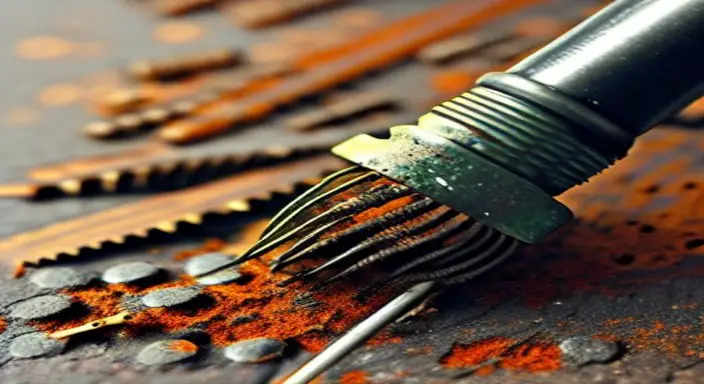
This method involves scraping away rust from the screw head and the area surrounding it with a wire brush.
Doing so will expose more of the screw head, making it easier to grip with your screwdriver.
For best results, use a wire brush of stainless steel to ensure the meeting doesn’t rust or corrode over time.
Additionally, wearing gloves and safety goggles while working with a wire brush is essential as it releases rusty fragments that could damage your eyes or be harmful if inhaled.
You can remove even the most stubbornly rusted screws with patience and the proper technique.
3. Soak screws in vinegar for 24 hours to dissolve the rust
If you encounter rusted screws, removing them may prove to be a challenging and time-consuming task. Fortunately, there is an easy and effective solution to this problem.
Soaking your rusted screws in vinegar for approximately 24 hours will allow the rusty residue to dissolve, making it much easier to remove the screws.
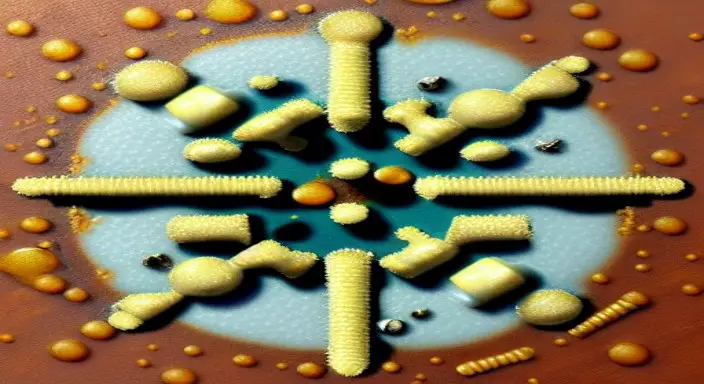
After soaking them, apply some force with a screwdriver or pliers to release them from their place.
However, it’s important to note that vinegar does have an acidic level, which may cause some damage to the metal. Therefore, using this method as a last resort is recommended, and an alternative option is prepared in case the rusted screws fail to loosen after soaking.
4. Douse screws in baking soda and scrub with a toothbrush
Rusted screws can be a major headache for anyone attempting to complete a project. Many people need to realize there are solutions to this problem that don’t require harsh chemicals or expensive equipment.
One effective method is to use baking soda to remove rust from screws. Mix baking soda and water until it forms a paste, then apply the paste to the rusted screws. Let the mixture sit for a few minutes, then use a toothbrush to scrub away the rust.
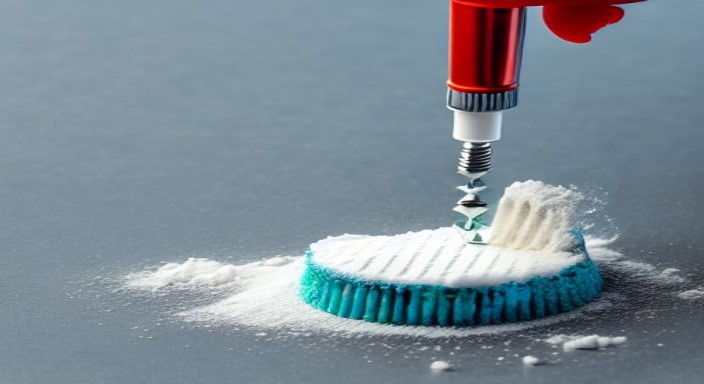
This method is safe and inexpensive and can save you time and frustration when dealing with rusted screws.
It is important to note that this method may not work for severely rusted screws; in those cases, it may be necessary to seek professional help.
5. Mix up some ammonia, bleach, and sand to make your rust removal solution
Mixing ammonia and bleach, two common household cleaning agents, creates a dangerous chemical reaction that can release toxic gas. Therefore, we do not recommend using this method to remove rust from screws.
Alternatively, mix sand with vinegar or lemon juice to create a paste to apply to the rusted screw. Allow the paste to sit for several hours before scrubbing the screw with a wire brush.

You can also use a penetrating oil or rust dissolver to loosen the rust before removing the screw.
Always use protective gloves and eyewear to avoid injury when handling rusted screws or chemicals.
6. Apply some WD-40 on the rusted area before scraping it off
Are you struggling to remove rusted screws from your projects? Don’t worry; we’ve got you covered. A tried and tested method is to apply some WD-40 on the rusted area before scraping it off to remove rusted screws effectively.
WD-40’s unique formula contains solvents that dissolve sticky and stubborn rust, making it easier to remove the screws. Before applying WD-40, wear gloves and goggles to protect your hands and eyes.
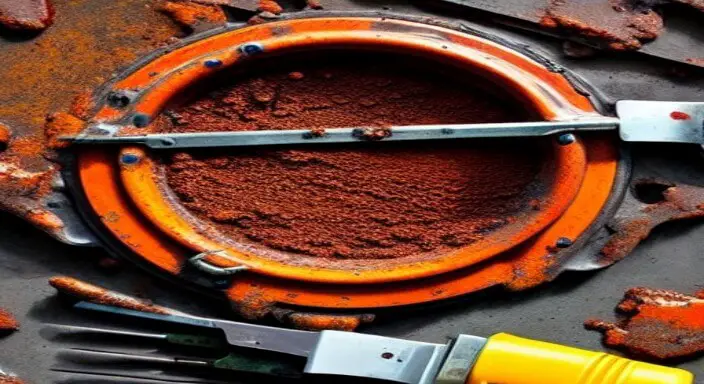
Once you’ve applied the WD-40, allow it to soak for at least 10 minutes before using a screwdriver to remove the screw.
If the screw doesn’t budge, you may want to reapply the WD-40 and wait for the solution to soak in longer. In some cases, you may need to replace the screw altogether. Applying WD-40 is a reliable solution that can make removing rusted screws easy.
7. Baking soda, olive oil, and dishwasher detergent can also be used to remove rust
Rust can make even the simplest tasks extremely frustrating, especially when removing rusted screws. However, there are several methods you can use to eliminate rust and dislodge those stubborn screws.
One effective solution is to use a mixture of baking soda, olive oil, and dishwasher detergent.
This combination is highly effective at dissolving rust and lubricating the screw, making removing it more accessible.
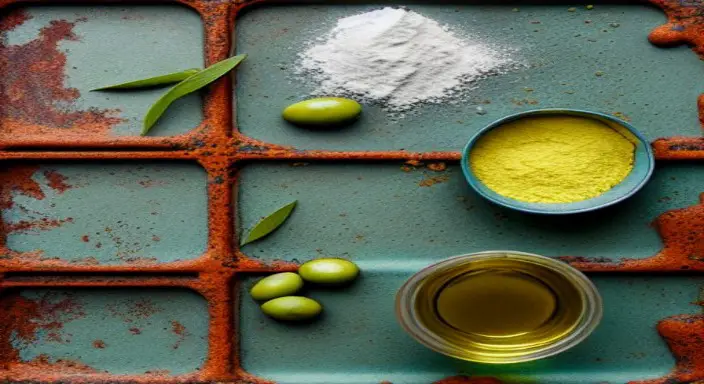
To prepare the solution, mix a tablespoon of baking soda, a tablespoon of olive oil, and a tablespoon of dishwasher detergent into a bowl.
Apply the mixture to the rusted screw and let it sit for a few hours. You can also use a toothbrush to gently scrub the area after applying the solution. With this technique, removing rusted screws can quickly do, saving you both time and energy.
8. Spray the rusted area with WD-40 and let it sit for 15 minutes before scrubbing off the rust
Removing rusted screws can be a frustrating and time-consuming process.
Fortunately, there are a few tricks to make the process easier. One of the most effective methods is to use WD-40. To use this method:
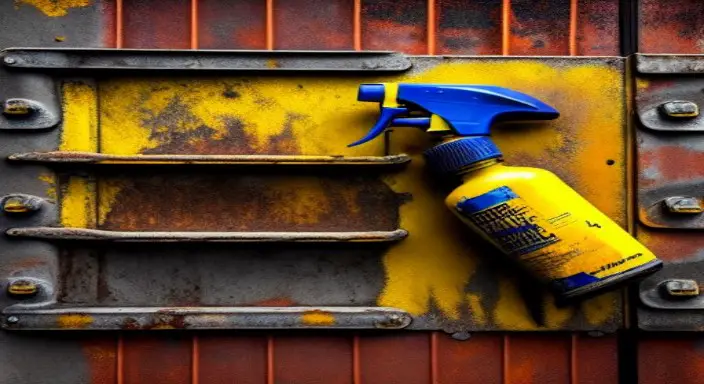
- Begin by spraying the rusted area generously with WD-40.
- Let the product sit for 15 minutes to penetrate the rust.
- After 15 minutes, take a stiff-bristled brush and scrub the rusted area. The rust should come off relatively quickly, leaving the screw in good condition.
It is important to note that while this method is effective, it may only work for somewhat stubborn rust.
In these cases, it may be necessary to use additional methods or seek professional assistance.
9. Repeat steps 6 – 8 if necessary; you may need to do this multiple times depending on how bad the rust is
One effective method is to follow the steps of heating the screw, applying penetrating oil, and using a screwdriver to turn it.
If the screw does not break free from the rust after the first attempt, it may be necessary to repeat these steps multiple times. It is particularly true in cases where the rust buildup is significant.
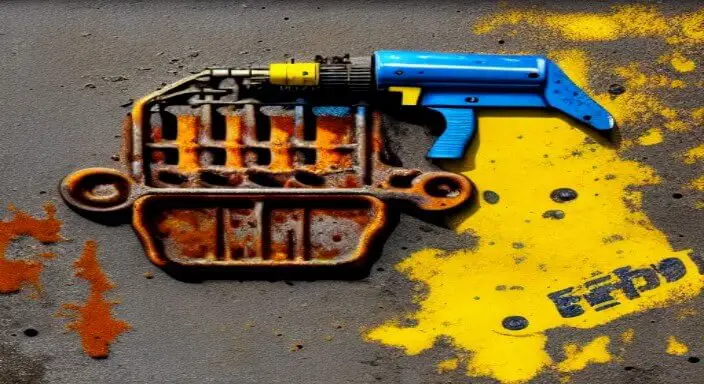
The penetrating oil can continue working through the rust and loosen the screw by repeating the process.
Patience and perseverance are essential when removing rusted screws, but you can free them and complete your project with proper care and attention.
10. Remember always to let the area dry completely between each application of WD-40 before continuing to the next step of your process of removing rusted screws
When removing rusted screws, it is essential to follow a systematic process to ensure the best possible outcome.
One beneficial product to assist in this process is WD-40. However, it is crucial to note that between each application of WD-40, you must allow the area to dry completely.
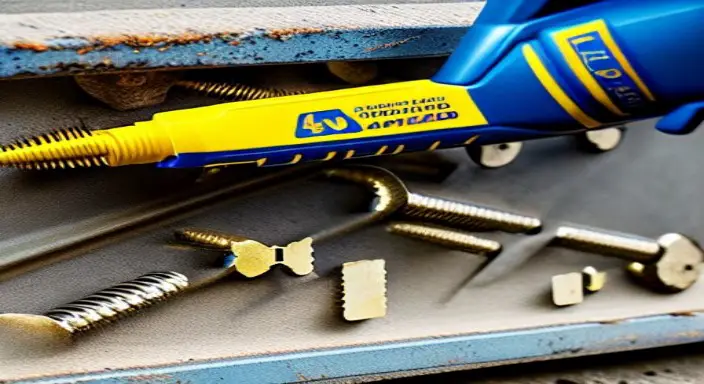
This step is often overlooked but can significantly impact the efficacy of the process.
Failure to wait for the area to dry completely could reduce product effectiveness and hinder the project’s overall success.
Therefore, it is crucial to remember always to let the area dry completely between each application of WD-40 before continuing to the next step of removing rusted screws.
Expert Opinion
To sum up, removing rusted screws can be frustrating, but it is not impossible.
You can use several methods, including soaking the screw in a rust dissolver or applying heat to the area with a blowtorch.
It is crucial to exercise caution throughout the process to prevent injury or further damage to the material.
You can successfully remove those stubborn rusty screws with patience and perseverance and return to your project quickly.




